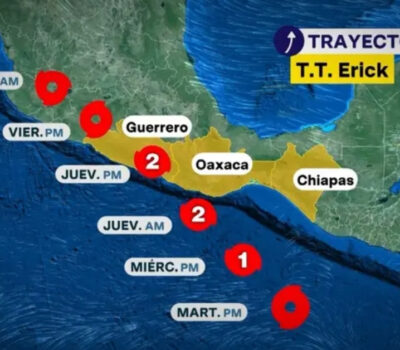A growing number of young Oaxacans are leaving the state to study and work elsewhere, citing limited university options and poor job prospects.
In a quiet but growing exodus, young people from the southern Mexican state of Oaxaca are leaving their communities in increasing numbers, seeking university education and job opportunities that their home state can’t provide. It’s a migration driven not by dreams of distant lands, but by the frustration of being denied a future at home.
According to a recent report by Noticias Voz e Imagen de Oaxaca, the trend highlights a stark reality: Oaxaca is experiencing a brain drain, losing its most ambitious and capable young people to other parts of Mexico due to a lack of educational infrastructure and dignified employment.
Higher Education Out of Reach
Many students in Oaxaca graduate from high school with the hope of pursuing a college degree, but quickly find that their options are limited. While the state does host institutions such as the Benito Juárez Autonomous University of Oaxaca (UABJO), the Technological University of the Central Valleys of Oaxaca (UTVCO), and the UNAM’s ENES campus in Puerto Escondido, these schools often lack the capacity and program diversity to meet student demand.
As a result, thousands of students set their sights elsewhere—most often to larger cities like Puebla, Mexico City, Guadalajara, and Monterrey—where universities offer more varied degrees, better resources, and in some cases, scholarships and support services unavailable in Oaxaca.
“There just aren’t enough spaces, and many of the degrees we want to study don’t exist here,” one student told Noticias Voz e Imagen. “We don’t want to leave, but we have no choice.”
Jobs That Don’t Pay
Even those who manage to study in Oaxaca often find themselves forced to leave after graduation. The local job market offers few opportunities for professional growth and even fewer that pay living wages. Informal labor, temporary contracts, and low salaries dominate the employment landscape—conditions that are especially demotivating for young professionals.
“Why would I stay if the only jobs available don’t even pay enough to live on?” asked another young Oaxacan interviewed by the outlet. “You study hard, you prepare, and at the end of the day, there’s nothing for you here.”
The Impact on Oaxaca
The consequences of this outward migration are far-reaching. The departure of educated youth depletes the state’s human capital, weakens local economies, and hinders development efforts. Towns and cities that invest in basic education are seeing the fruits of that investment leave—and often never return.
This phenomenon also represents a missed opportunity for Oaxaca to benefit from the skills, ideas, and energy of its own people. Instead, other regions gain the advantage.
“We’re investing in youth only to watch them succeed somewhere else,” said one education advocate in Oaxaca City. “It’s a tragedy for local development.”
How to Stop the Drain
Experts and community leaders agree that reversing this trend will require structural changes. These include:
- Expanding university offerings in Oaxaca, including specialized and technical programs tied to local industries.
- Improving job quality, including formal employment contracts, living wages, and career pathways for graduates.
- Developing regional scholarship programs that encourage students to return home after completing their studies.
- Promoting local pride and civic engagement to inspire young people to build futures within their own communities.
Some local governments and universities have started pilot programs aimed at retaining talent, but results have been modest so far. Without more aggressive policy support at both the state and federal levels, advocates warn, Oaxaca will continue to lose a generation of professionals that could help lift the region out of poverty and marginalization.
A Generation on the Move
For now, the migration continues. Each year, more students pack their bags with uncertainty and ambition, hoping that the opportunities denied to them at home will be waiting somewhere else.
They leave behind not just towns and families, but the hope that Oaxaca might someday offer them more than just roots—it could offer them a future.
A growing number of young Oaxacans are leaving the state to study and work elsewhere, citing limited university options and poor job . . .












